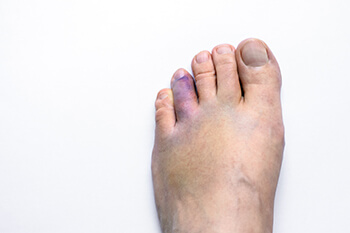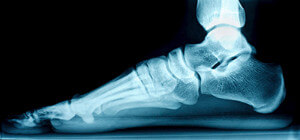
A broken toe, or toe fracture, is a painful injury when one or more toe bones, known as phalanges, sustain damage. This injury typically results from a sudden impact or trauma, such as stubbing the toe, dropping a heavy object on it, or experiencing a direct blow during sports or accidents. The symptoms of a broken toe are distinct and hard to miss. The most common sign is immediate pain and discomfort, which can range from mild to severe, depending on the extent of the fracture. Additionally, swelling, bruising, and tenderness around the affected area are typical and may worsen over time. The toe may also appear misshapen or out of alignment, making it challenging to move or bear weight. In some cases, you may even hear a cracking or popping sound at the time of the injury. Proper diagnosis and timely treatment are essential for a full and safe recovery. If you have sustained a broken toe, it is strongly suggested that you consult a podiatrist who can accurately diagnose and treat this condition.
Broken toes may cause a lot of pain and should be treated as soon as possible. If you have any concerns about your feet, contact Scott Samera, DPM from Samera / Foot + Ankle. Our doctor will treat your foot and ankle needs.
What Is a Broken Toe?
A broken toe occurs when one or more of the toe bones of the foot are broken after an injury. Injuries such as stubbing your toe or dropping a heavy object on it may cause a toe fracture.
Symptoms of a Broken Toe
- Swelling
- Pain (with/without wearing shoes)
- Stiffness
- Nail Injury
Although the injured toe should be monitored daily, it is especially important to have a podiatrist look at your toe if you have severe symptoms. Some of these symptoms include worsening or new pain that is not relieved with medication, sores, redness, or open wounds near the toe.
If you have any questions, please feel free to contact our office located in Lake City and Branford, FL . We offer the newest diagnostic and treatment technologies for all your foot care needs.








